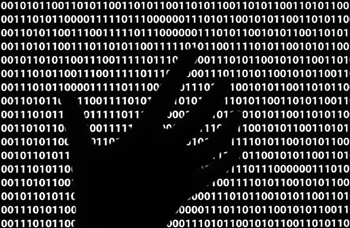
CDP improves recoverability for all types of data in physical and virtual environments.
Let’s face it, we’ve all accidentally deleted an important e-mail or critical data file more than once. And, we’ve unwittingly been victimized by hackers and malware and have spent hours undoing the damage caused by poorly tested software. Unlike a large-scale disaster, these events only make data inaccessible. Usually, your server or other hardware resources continue to work as expected.
Continuous data protection (CDP) is a relatively new technology designed to lower recovery point objectives (RPOs) and guarantee the results of on-site and off-site data restoration efforts. Essentially, CDP enables you to recover a version of your data to a point in time just prior to an accidental deletion or corruption and do it very quickly. In the six years since the buzz surrounding CDP first reached our eardrums, it has grown more refined, and it has found its place among very useful recovery technologies.
Throughout the computer age, organizations have relied on tape backups in dire situations. Unlike tape-based backups—also the most common form of backup technology— CDP technology does not require the interruption of business to back up data. It works continuously to save copies of your critical data to an alternate server so you can immediately recover data from any point in time. If you accidentally delete an important document or experience data corruption, you can return to the point in time just before the problem occurred. Recovery occurs immediately, following a couple routine commands.
There’s no point in denying that CDP technologies have generated a lot of interest in the recent past. In April of 2010, the Enterprise Strategy Group (ESG) surveyed 510 senior IT professionals. They discovered that 43 percent of the people who responded to their questionnaire had plans to implement CDP over the next two years.
Two flavors
It is important to note the difference between true CDP and near CDP solutions when evaluating your data protection strategy.
- True CDP – True CDP captures every data write and transfers it to a secondary disk. This enables an “undo” facility by allowing recovery to any point in time. This is especially beneficial when trying to resolve a data corruption issue, such as one that might be caused by a virus. With true CDP, you can identify a tainted e-mail, for example, and then roll back to a point just prior to the time the e-mail was received.
- Near CDP – Near CDP differs from true CDP in that you can recover only to specific points in time. For example, near CDP may copy data to the secondary storage only when a file is saved or closed. In this case, recovery is limited to the state of the file at those times. If several updates are performed between the time a file is opened and the time it is saved or closed, a near CDP solution that uses this strategy will not provide the means to recover data to its state at a point in the middle of this stream of updates. In some cases, this may include several hours or more worth of updates. In high transaction volume environments, or environments with rigid compliance or governance regulations, this may not be sufficient.
Secondary uses
Apart from its stellar ability to instantly recover specific snippets of very important data, CDP is now used to augment high performance data protection systems that facilitate high availability (HA) and disaster recovery. HA solutions are especially useful for data protection because they provide the power to keep your applications operating continuously, regardless of planned or unplanned downtime. HA solutions replicate your production environment to a backup server in real time and enable you to switch operations to the backup in the event of downtime. With recent innovations in automation and ease of use, they require little management or intervention to remain effective around the clock.
But in certain data corruption situations, HA solutions could use some help. Because HA solutions replicate data in real time to a backup server, they also replicate data corruptions to the backup environment. Options for recovering data that was accidentally deleted or corrupted run the spectrum from manually re-entering the work to utilizing advanced database technologies, such as journaling or logging. And, in many cases, recovery operations of this nature require a tape restore.
However, when HA is combined with CDP, recovering from data corruption or accidental deletions is no longer a problem. CDP enables you to simply return to any point in time previous to the corruption or deletion for instant recovery. The combination of HA and CDP thus provides seamless protection against data loss, data corruption and any type of IT or application downtime.
CDP and virtualization
As companies become more reliant upon technology in general, and technology that facilitates virtualization specifically, servers and storage assets will continue to expand. At the same time, recovery windows are contracting, making advanced backup and recovery technology more important than ever. When CDP tools are combined with replication technology, partition recovery can occur—with no data loss whatsoever— not in hours or minutes, but in seconds.
The benefits of integrating a CDP solution into your virtualized environment include:
- One solution can handle all leading virtualization platforms.
- Numerous configurations can be protected – P to V, V to P, P to P and V to V.
- A single unified console can manage both virtual and physical environments.
- You can replicate only key applications (i.e., SQL Server) instead of entire VMs.
IT analysts generally agree that CDP will be integrated into most IT department data management strategies in years to come. Since its power lies in its ability to reverse data corruption in a fraction of the time needed to achieve the same results with tape, savings can be realized on several planes.
Whether your environment consists of centralized virtual servers, decentralized physical servers or any combination of these topographies, CDP can deliver confidence.




